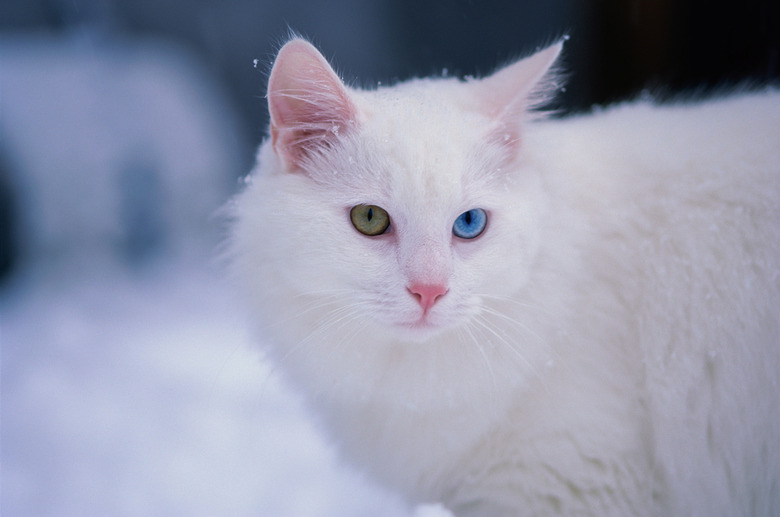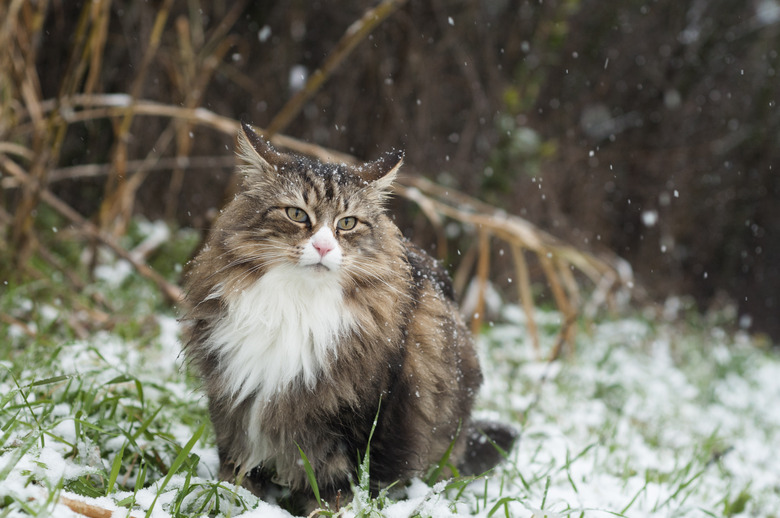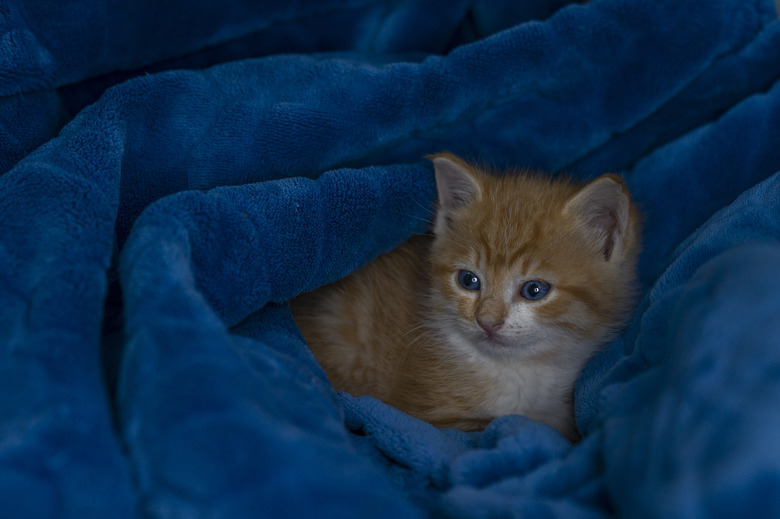What Does It Mean When Your Cats Ears Are Cold?
It's not uncommon for our cat companions to offer us their head for a friendly scratch between the brows or behind the ears. Fortunately, cats like their ears to be touched, which is useful because it's sometimes possible to detect health issues by noticing temperature changes in your cat's ears.
Sometimes a cat's pinna — the outer part of the ear — will feel cooler than the rest of their body. If you notice that your cat's ears are cold and there's a slight temperature difference between your cat's ears and body, it's probably no cause for concern. But if your cat's ears are noticeably cold, especially if they flinch at the touch, this can indicate serious health problems, such as frostbite or hyperthermia, the latter of which is a potentially life-threatening condition.
Cat's ears help regulate body temperature
Cat's ears help regulate body temperature
In addition to helping your feline hear, a cat's ears help them regulate their body temperature. A normal body temperature for a cat is about 101 degrees Fahrenheit. Like the rest of their body, a cat's ears should feel warm to the touch. So, if you notice that your cat's ears feel cool to your 97-degree hands, it could indicate a physical health condition.
The best way for a cat owner to tell if their cat has a low core body temperature is to use a rectal thermometer. However, to do this, you need to be aware of a cat's normal body temperature and need some training in using a thermometer effectively. This might be a task best left to a veterinary technician.
Cold ears could signal hypothermia in cats
Cold ears could signal hypothermia in cats
Cat ear temperatures that are slightly cool are not likely a sign that anything is physically wrong with your feline. However, significantly cold ears can indicate serious health concerns, such as hypothermia. Generally, hypothermia can result when an animal's core temperature drops below 95 degrees.
Symptoms of hypothermia in addition to cold ears to look out for are:
- cold legs and paws
- shivering
- lowered body temperature
- lethargy
- slow breathing and heart rate
- pale gums
- weakness
Clinically, there are two types of hypothermia:
- Primary hypothermia occurs when an animal is exposed to a cold environment and loses heat faster than the body can generate it.
- Secondary hypothermia occurs due to illness, injury, or drugs that disrupt the body's normal ability to thermoregulate.
Note that secondary hypothermia can occur even with mild temperature changes because the body is unable to compensate thanks to disruptions in the body's regulatory systems or blood flow.
Underlying medical conditions, such as hypothyroidism and hypoglycemia, can also cause hypothermia. Regardless of the cause, hypothermia can result in death if a cat goes into shock. If you suspect your cat is hypothermic, wrap them in warm blankets or towels to keep the cat warm and seek immediate veterinary care.
Cold cat ears could signal frostbite
Cold cat ears could signal frostbite
Frostbite is a serious health issue that occurs when blood vessels constrict in an effort to conserve heat in the rest of the body. Frostbite can cause a cat's ears to become cold to the touch. However, there are usually additional noticeable symptoms that accompany frostbite.
Symptoms of frostbite include the following:
- Cold skin
- Discoloration
- Swelling
- Pain when handled
- Dead skin tissue
If your cat has frostbitten ears, raise their core body temperature using warm blankets. Never massage cold cat ears or use forced heat, such as hair dryers, on frostbitten ears. Do not apply heat directly to the cat's skin or fur, including hot water bottles or heating pads. Hot or warm water bottles should only be used under towels or blankets and should not be applied directly to your pet's body.
Frostbite is a serious condition that can lead to pain, inflammation, and necrotic tissue on the affected area. If you suspect frostbite on your cat or dog, seek immediate veterinary care.
Hypothermia and frostbite in cats require medical care
Hypothermia and frostbite in cats require medical care
If you notice that your cat's ears are extremely cold to the touch, consult your veterinarian immediately to prevent possible complications caused by hypothermia or frostbite. Both are serious conditions and possibly life-threatening. If your cat has been exposed to cold weather, bring them inside, wrap their body in dry towels, and place a few warm bottles of water around the outside of the towels to help increase their core temperature.
Then, take your cat to a veterinarian. In some cases, warmed IV fluids might be needed to increase your cat's temperature. Work with your veterinarian to find the most effective treatment plan as quickly as possible to improve your cat's health.
Keep your cat indoors during cold temperatures
Keep your cat indoors during cold temperatures
Prevention is the best bet to avoid hypothermia or frostbite in cats. Cats are safest when kept indoors all the time. However, if your cat is not an indoor cat and goes outdoors occasionally, keep them inside when temperatures are at the freezing point or fall below freezing, especially at night during low temperatures.
Note that cats with underlying health problems that can lead to decreased heat production should be handled with extra care. Also, aging cats fall into this category because elderly felines are more prone to lower body temperatures than younger cats.
The bottom line
The bottom line
If your cat's ears are slightly cold to the touch, it's likely nothing to worry about, but if your cat's ears are significantly cold and they have recently been exposed to cold temperatures, and the cat flinches when they are touched, that might be a symptom of hypothermia or frostbite. Cold ears accompanied with shivering, lowered body temperature, lethargy, cold paws and legs, and slow breathing and heart rate indicate hypothermia. Both are serious conditions that require immediate veterinary attention.



